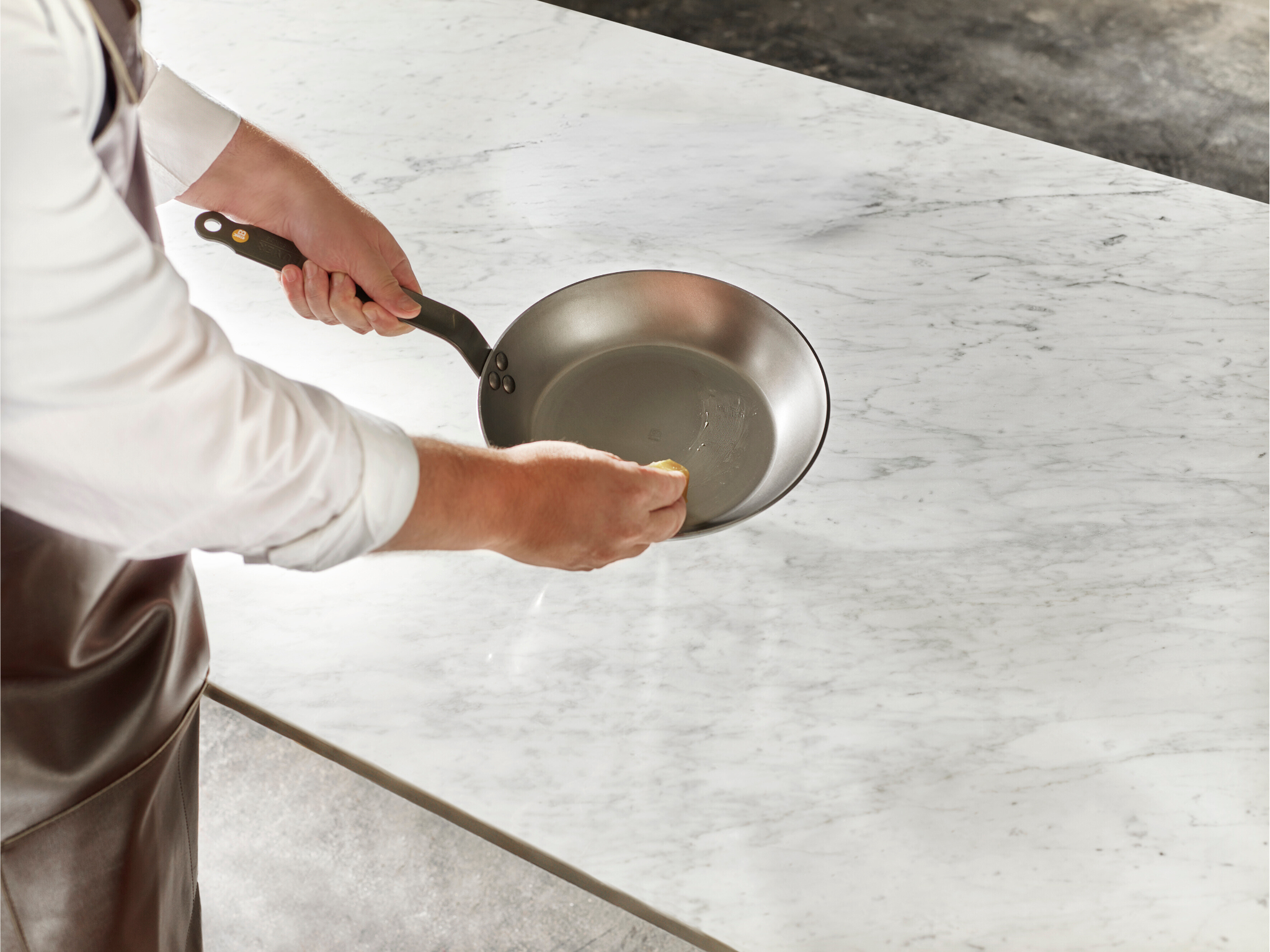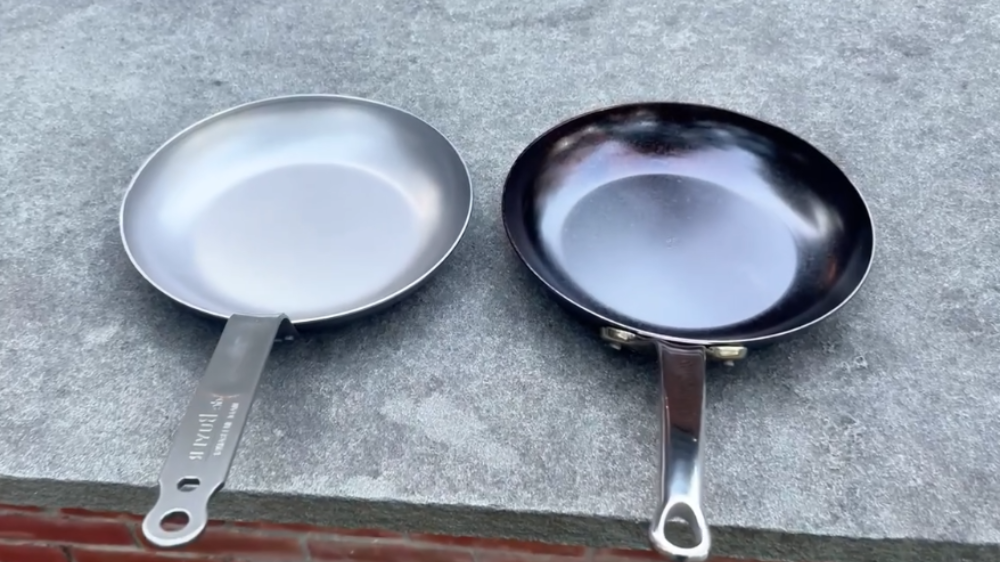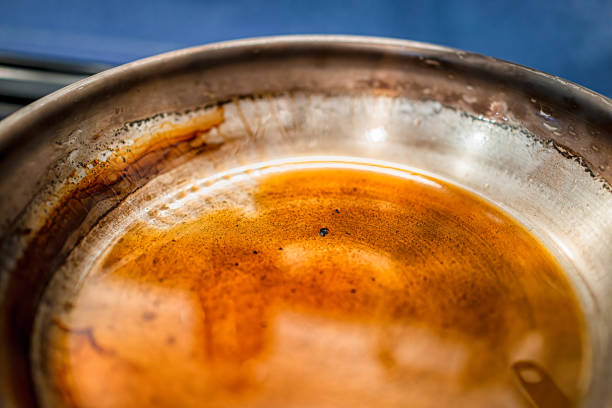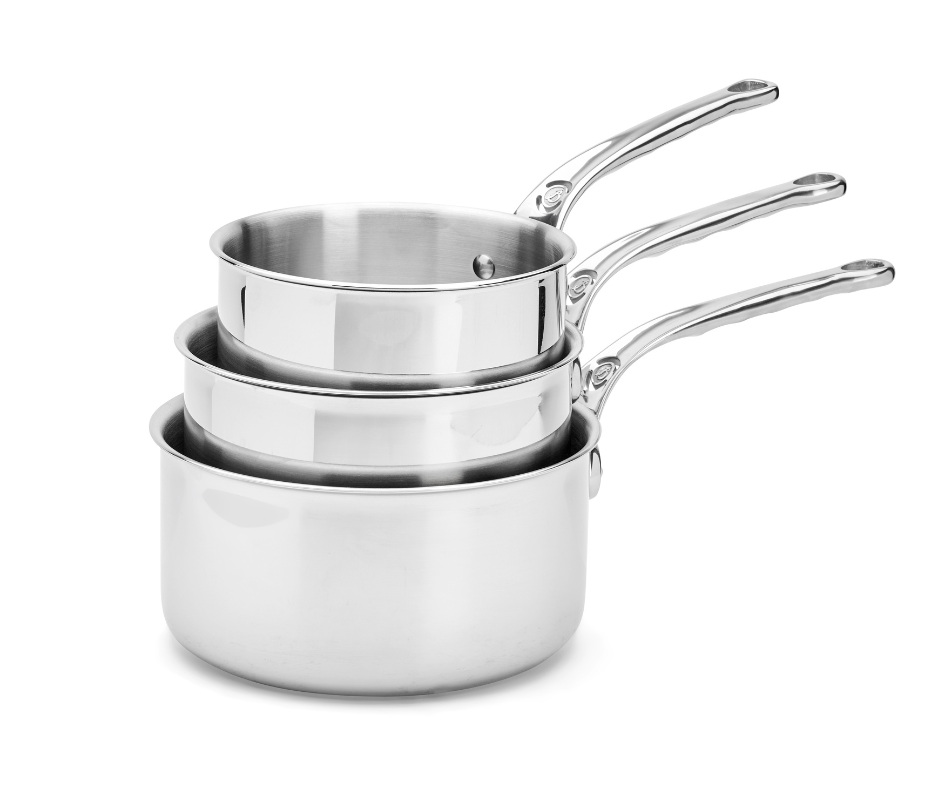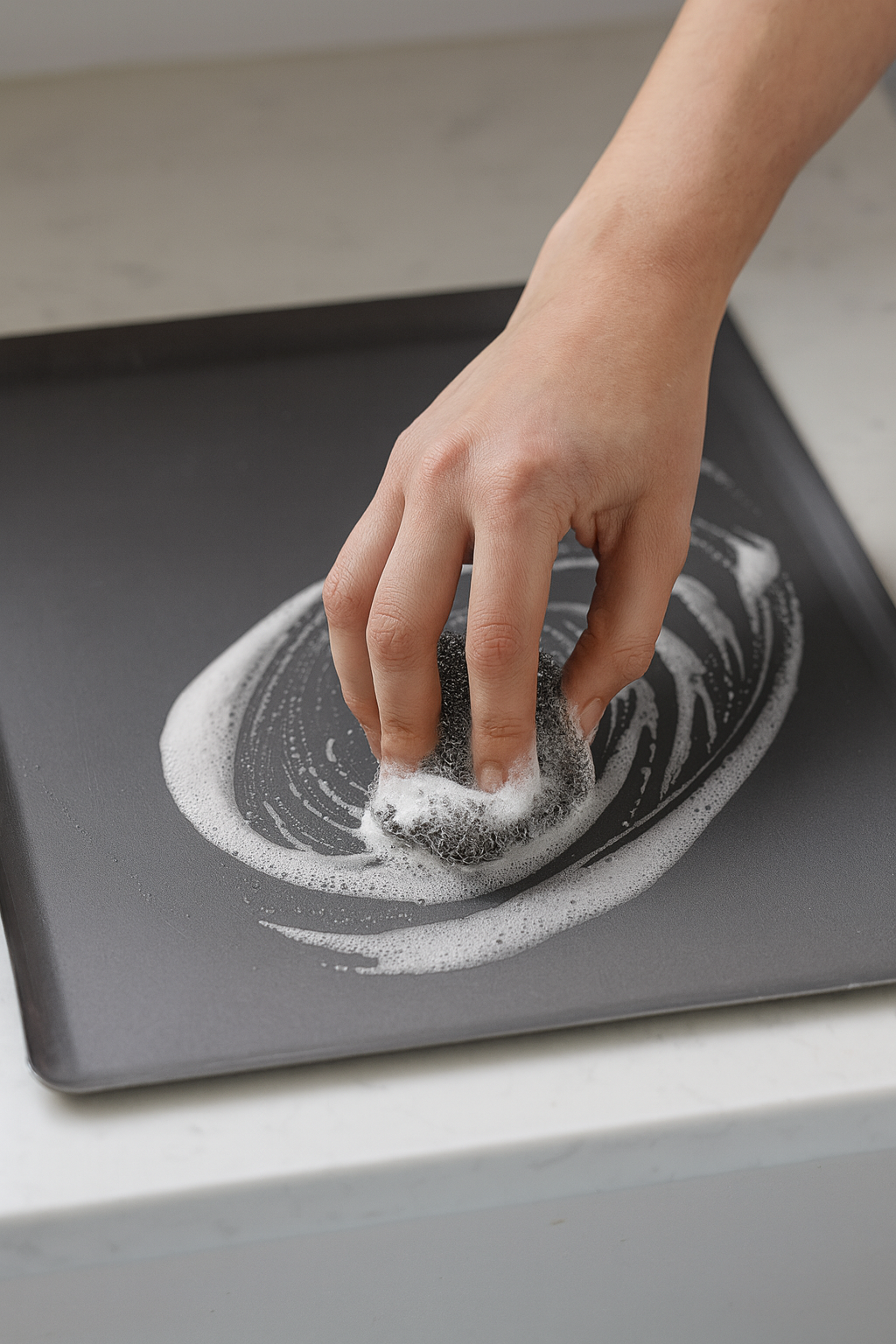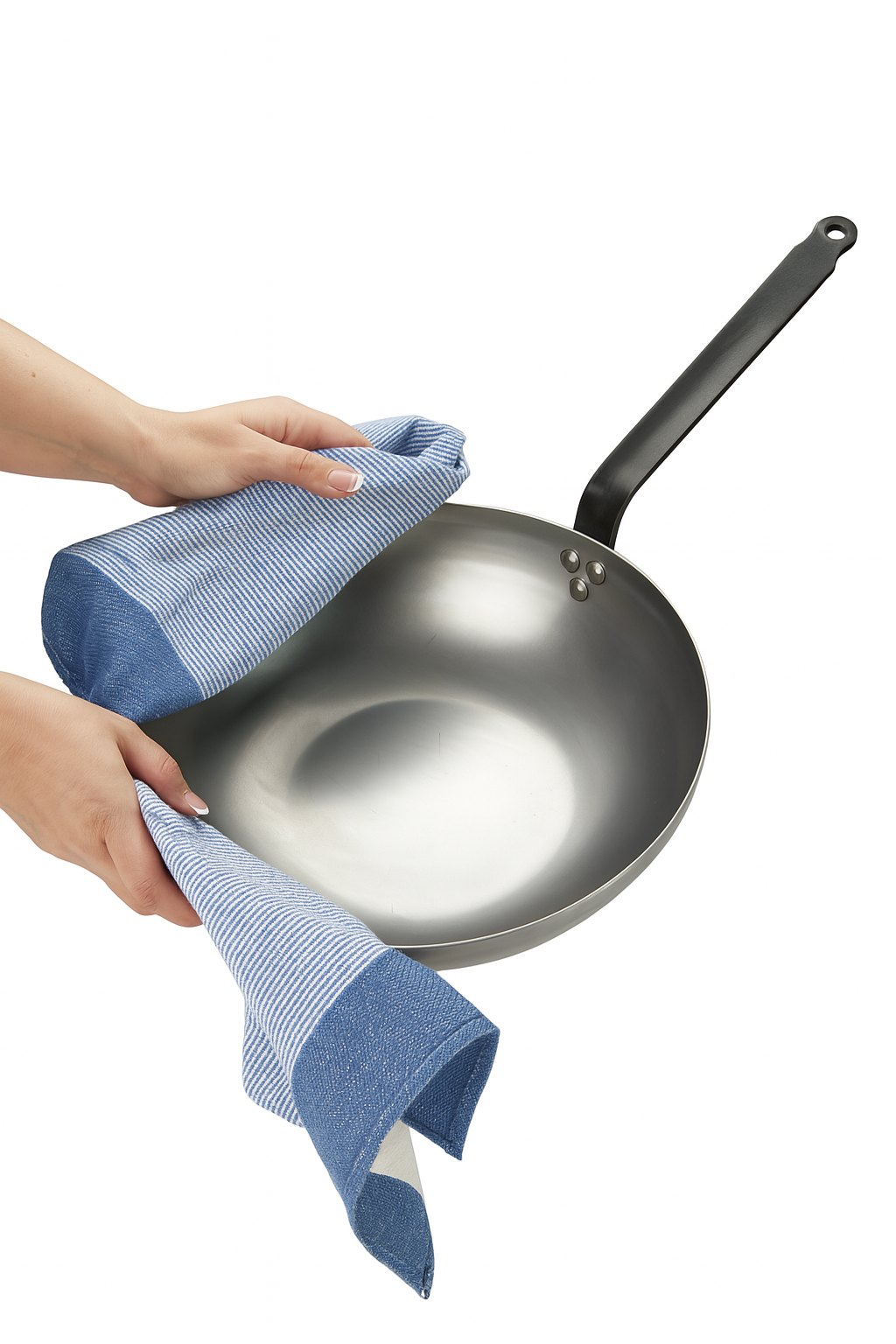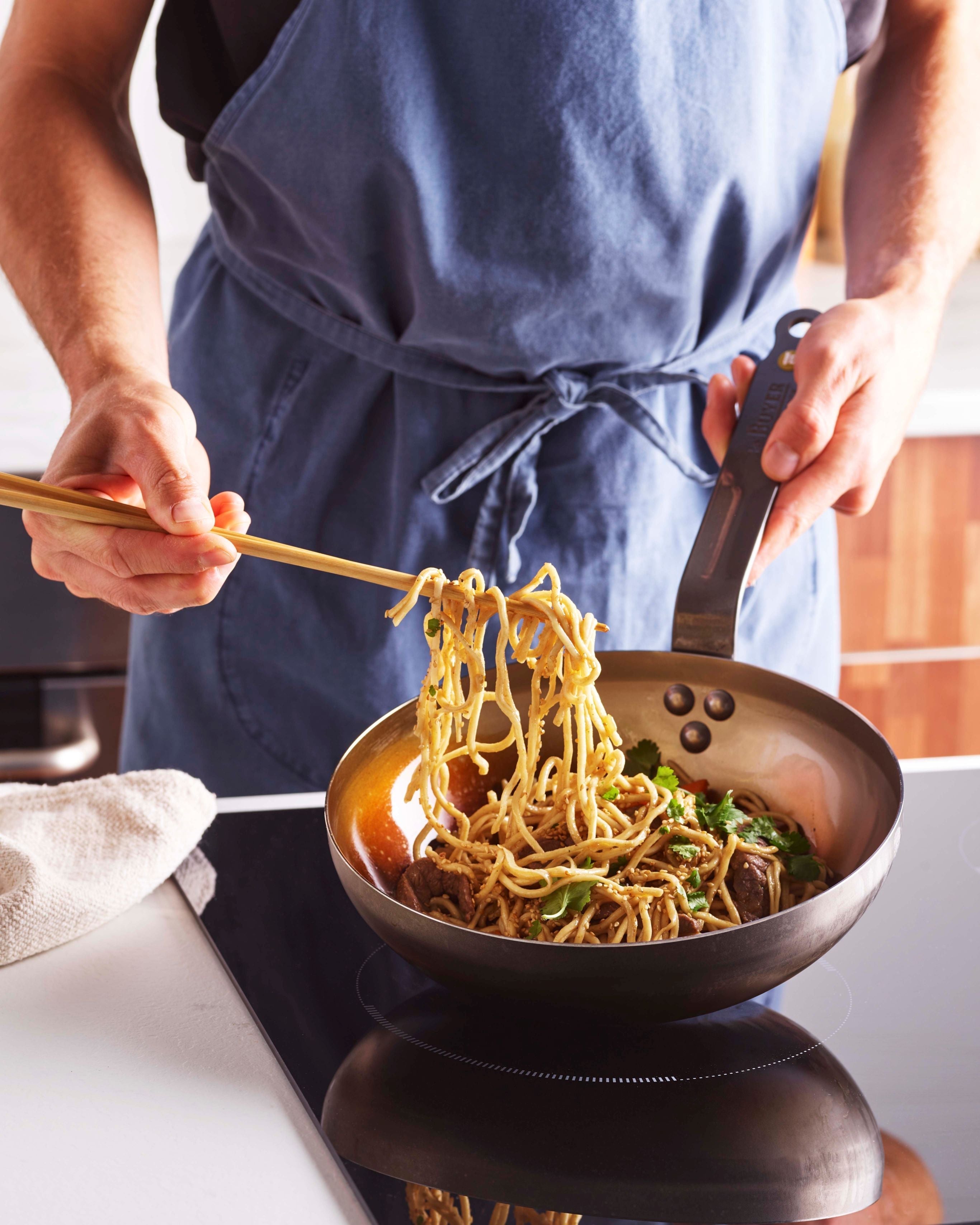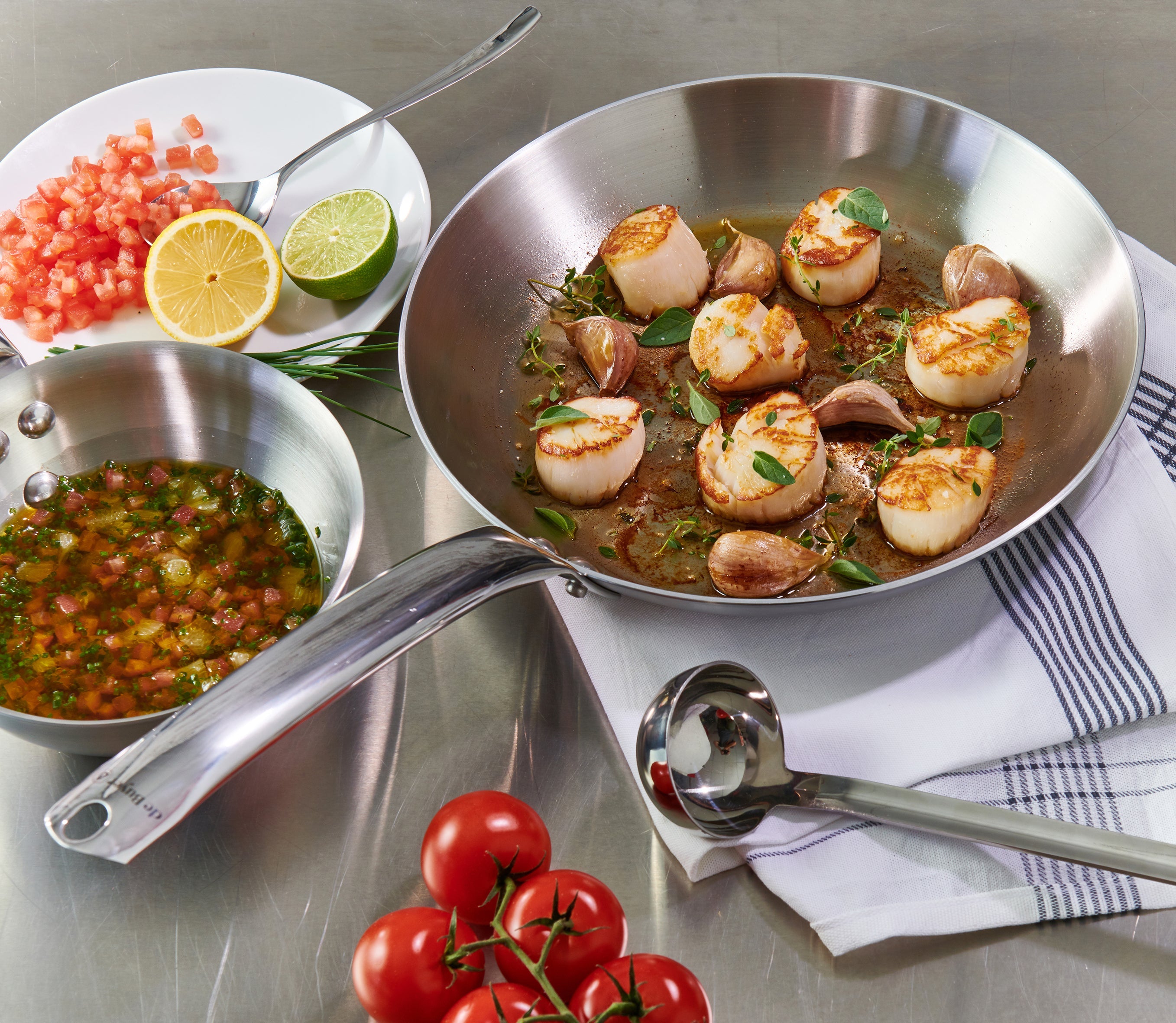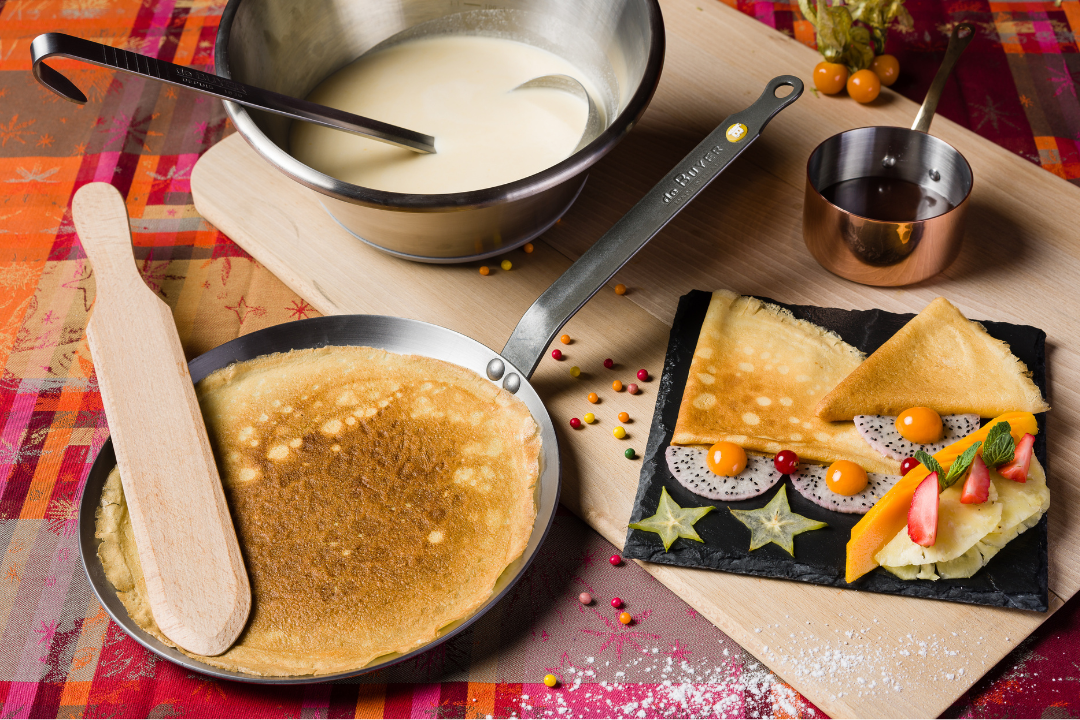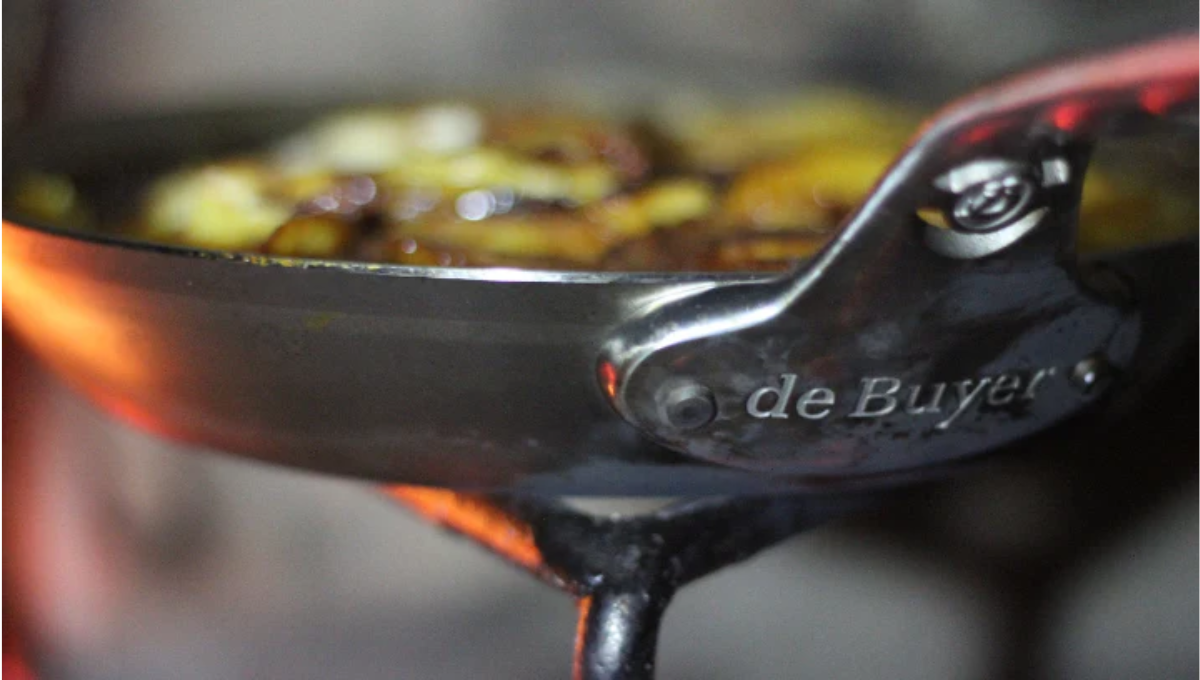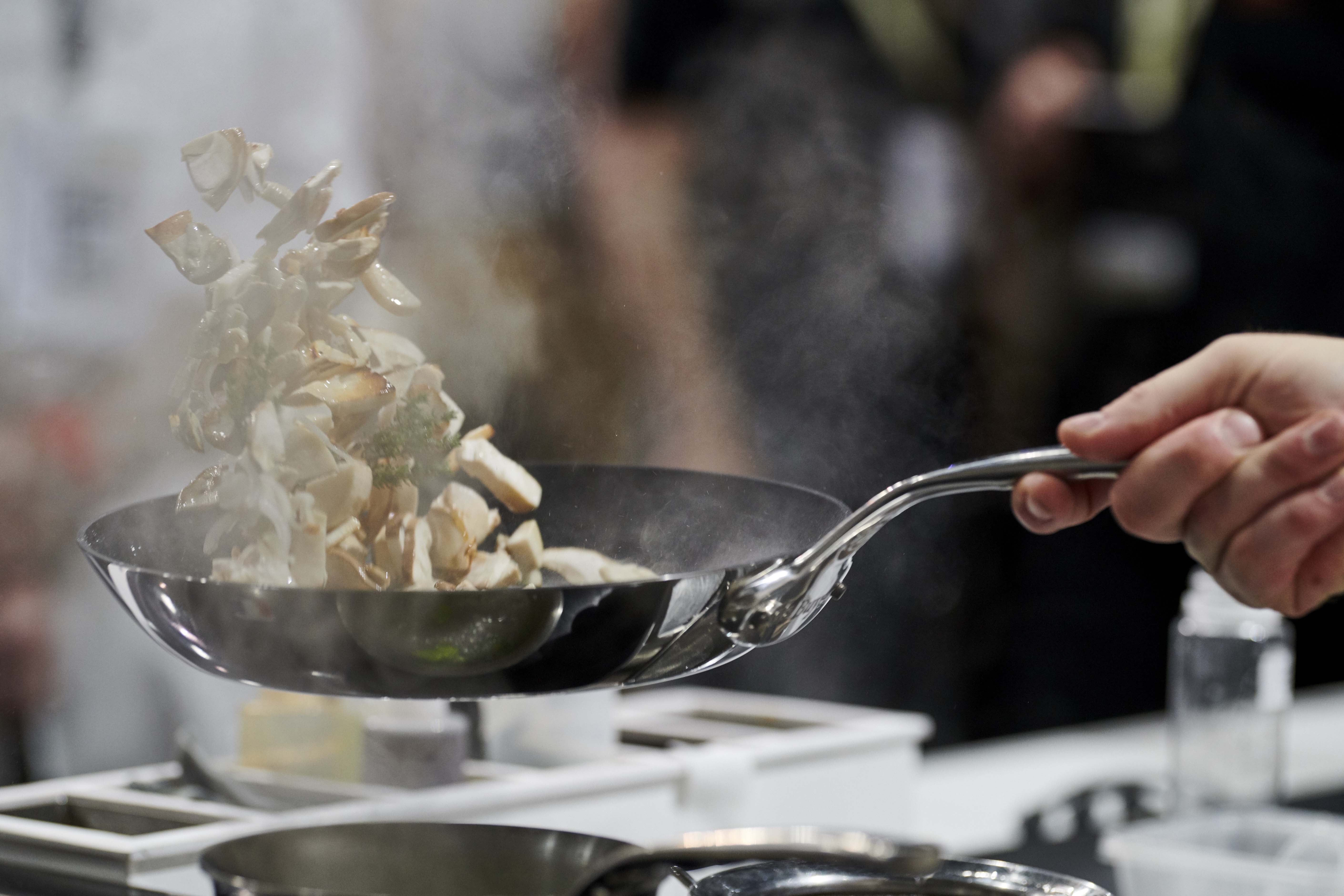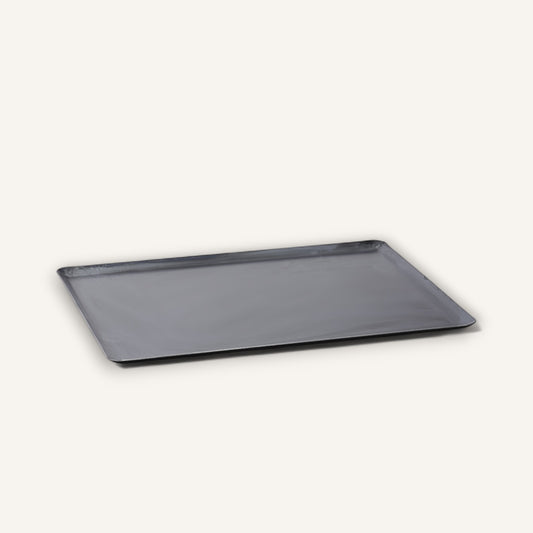What’s lighter than cast iron and responsive like stainless steel? Top-of-the-line carbon steel cookware. These pans are the workhorse of professional kitchens and offer robust benefits for the discerning home cook.
However, they only perform when cared for properly. Take care of your carbon steel pans, and they’ll take care of you, concocting perfectly seared steak and maintaining a consistent shallow fry every time. Improperly maintained carbon steel cookware will stick and may even rust, limiting wasting the potential of these pans.
This article will provide expert tips and techniques to help chefs and home cooks keep their carbon steel pans in top condition.
Demystifying the Carbon Steel Pan
The mythic carbon steel frying pan is a powerhouse in the kitchen, but this legendary pan comes with its own common myths.
Myth #1: You need to re-season your carbon steel pans frequently.
The regular seasoning myth comes from misunderstanding how carbon steel and cast iron pans function. Both these cookware materials should be seasoned to protect them from rust and keep them working for years. The seasoning on your carbon steel pan will wear down with time, but this happens over months and months of heavy use.
A periodically used and properly maintained carbon steel pan can be re-seasoned a few times yearly.
Myth #2: You can never use metal utensils on carbon steel.
Metal can scrape a carbon steel pan’s protective layer, necessitating another seasoning process. However, cooks can use the correct type of metal utensils and not scrape the seasoning. Purchase premium metal tools and use them deliberately, not harshly.
Myth #3: Carbon steel and cast iron are essentially the same.
de Buyer’s premium carbon steel cookware is made with 99% iron and 1% carbon. These durable tools are responsive like a stainless steel pan and have cast iron's high heat retention and unique nonstick features.
Carbon steel is lighter than cast iron and efficiently performs various kitchen tasks while being light on the wrist.
Common Challenges and Solutions
A proper cleaning routine will negate most cookware issues before they arise. Below, we'll discuss fixes for rust and proper seasoning maintenance. However, stubborn stains and residues still pop up occasionally.
For recurring stains, sticky films, and food residue, we recommend always hand washing your pans, storing them away from food products, and keeping a small, clean scrubber on hand.
Even a toothbrush can be excellent for getting at those sticky spots without rubbing away the protective layer.
How to Clean Carbon Steel Pans
Properly cleaning your carbon steel removes food particles and protects the pan’s patina. This is another term for the protective layer that forms after seasoning. This layer may darken the surface of the pan and will be smooth to the touch.
Here’s how to effectively clean while maintaining this layer:
-
Let it cool: Plunging a hot pan into cool sink water leads to warping and cracking the cooking surface. Instead, let carbon steel cool down for a few minutes before setting it in warm water.
-
Soak for a few minutes: You can soak off food residue for a few minutes in warm water. Allowing the pan to sit longer may strip the seasoned layer and cause rusting.
-
Scrub with care: If needed, use a small amount of dish soap. Scrub gently with a kitchen towel or soft-bristled brush. Avoid using steel wool and other abrasive scrubbers.
-
Dry completely: Avoid rack drying your carbon steel, which will encourage rusting. Instead, dry the pan completely with a dish towel.
-
Oil and store: This step isn’t necessary, but many carbon steel aficionados spread a small layer of oil over the pan and wipe away excess oil with a paper towel before storage. This can help keep a seasoned carbon steel pan in top shape.
Best Practices for Removing Rust
Even the best chefs can make mistakes, and rust happens. There’s no need to panic. Follow one of the following three methods to renew your pan and eliminate rust:
-
Salt Method: Use this technique when only a few small spots of rust are visible on the pan. Place coarse salt and oil (grapeseed or vegetable oil) on the rust spots and scrub the area with a dish or paper towel until the rust disappears. Wipe off excess. Since you haven’t removed the seasoning, you can store the pan in a dry place.
-
Scouring Method: Scrub a scouring pad in circular motions over the rust until it’s gone. Next, clean the pan using hot water and mild soap. You may need to re-season after using this method.
-
Vinegar Method: Acidic ingredients like vinegar break down carbon steel’s patina, so this is a last-ditch method when facing tough rust stains. Soak your pan in a 50% vinegar and 50% water mixture for one to five hours. Remove and dry the pan, dusting it with baking soda to neutralize the vinegar. Finally, rinse with water until the rust is gone. If needed, you may repeat this process by only soaking for an hour. You’ll need to dry the pan and re-season it.
Maintaining the Perfect Pan Seasoning
Like a cast iron skillet, your carbon steel pans can be seasoned to perfection, creating the ideal nonstick surface and protecting your cookware from rust.
You can season in the oven or on the stovetop. Chefs can oven season the de Buyer Mineral B PRO and Blue Carbon Steel collections; however, the Mineral B can only be seasoned on the cooktop.
To season for the first time, you’ll need to remove the beeswax layer that protects your pans during shipping. Then, hand wash your carbon iron cookware with hot water and a gentle scrubber. Next, follow one of the seasoning methods.
Stovetop Seasoning
-
Oil Your Pan: Use a dry dishcloth or paper towel to rub a thin layer of oil over the pan. Use only 3-4 drops; too much oil will affect the seasoning process and be difficult to reverse.
-
Heat on Stovetop: Heat your cookware over a medium-high burner. The oil will start to smoke, and the pan will start to turn a dark brown color. This is the patina forming.
-
Wipe Off Excess Oil: Allow the pan to cool and wipe off any remaining cooking oil. You may repeat the process 1-2 more times to get a darker, thicker season, but your pan will continue to season on its own as you cook with it.
Oven Seasoning
-
Oil Your Pan and Heat Oven: Use a light layer of neutral oil like canola oil. Preheat your oven to the smoke point of your particular oil, typically around 450°F.
-
Season in the Oven: Place your pan in the oven for an hour. Allow it to cool, and your high-quality carbon steel pan is ready for use.
You may follow all the above steps when re-seasoning, minus the beeswax removal. Sometimes, it will be necessary to strip the season using vinegar when rust is an issue or acidic foods are used. Otherwise, you can continue to layer seasonings over and over again.
This process should be repeated as needed or every few months. Over time, you’ll develop a dark, gorgeous patina that protects your pan.
Expert Tips: Enhancing Your Cleaning Routine
A cleaning routine that includes all the above products is vital for proper maintenance. However, one factor in a carbon steel cleaning routine that’s often overlooked is proper storage.
It’s easy to overlook the importance of storage because your carbon steel pans are incredibly durable. They facilitate fantastic foods, resist scratching, and are easy to handle. However, a scratch in one of your pans will make it harder to season properly and allow for easier stain formation. The one thing that can scratch carbon steel most easily is carbon steel. This means storing your carbon cookware in a messy pile is a mistake.
Our best expert tip is to use a chef-approved storage method, such as pot protectors, a kitchen rack, hooks, or spreading out your pan storage so they don’t touch.
Elevate Your Cooking Experience with de Buyer
Proper care and maintenance for carbon steel pans will keep them performing optimally for years. Our expert tips and techniques will help you keep your carbon steel pans pristine.
Unlock the benefits of one-of-a-kind, French carbon steel cookware at de Buyer. Our professional-grade pots and pans keep your kitchen running smoothly and help chefs push culinary innovation.
